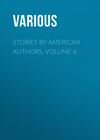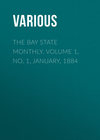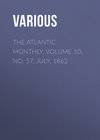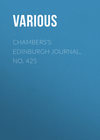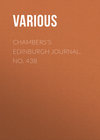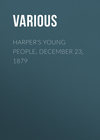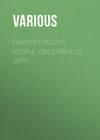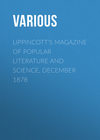Kitabı oku: «Graham's Magazine, Vol. XLI, No. 6, December 1852», sayfa 20
An English firm at Callao, which has considerable mining property on the Ceno de Pasco, has recently procured from England a quantity of improved machinery for the extraction of the silver from its ore. The old method is still commonly practised, that is to say, the ore is amalgamated with quicksilver by treading together quicksilver and ore beneath the feet of mules and horses; this proceeding causes a considerable loss of quicksilver – ruins the feet of the animals, and does not properly fulfill its purpose. The quicksilver – nearly all of which it brought from Europe – is afterward evaporated by the application of heat. Coal is found on the Puna.
The whole annual produce of the mines of Ceno Pasco once reached the amount of eight millions of dollars, or one million, six hundred and fifty thousand pounds; but the returns now do not probably reach half that sum. There is in the city a government establishment, at which all the silver is marked before being sent to Lima. It is usually melted into large oblong flat bars, some of which weigh from sixty to eighty pounds. These are conveyed to the capital on mules, commonly with no protection except that of the mule-drivers, although the Sierra may be swarming with the bandit montoneros. These gentlemen do not consider it convenient to intercept the silver on its downward passage, they preferring to wait for the coin that is returned in payment. With this upward freight a strong escort is always sent, and when it is attacked, a fierce battle ensues, that often ends in favor of the robbers.
The singular accoutrements of the horsemen are among the first things that attract the attention of the stranger in Peru. If the rider be a rich man, the horse is almost hidden by a multitude of straps and ornaments. The saddle is made very high both on pummel and crupper, leaving just room for the rider to wedge himself into his seat between them. Under the saddle is the pillow, an alpaca or goat’s skin, dyed black, with the wool combed out or twisted with silver wire into short curls, lengthened sometimes with long fringes of dyed alpaca wool. The stirrups are heavy and clumsy; each is a solid piece of wood, often measuring twelve inches square at the bottom, and gradually tapering to a point where it is attached to the saddle by a silver ring; on one side an opening is scooped out for the foot; the other three sides are all highly polished, often carved beautifully and inlaid with silver. The bit is very heavy; often of silver. The head-band is adorned with a long fringe of plaited strips of leather; and the reins, which are separate, pass through a silver ring, one of them being continued in a long lash. In addition to the bridle, the horse’s head is encumbered with a leathern halter covered with silver ornaments. The spurs are the most preposterous part of the whole equipment. They are so formed, that the wearer can walk only on his toes. The stem of the spur is often twelve inches long, and the rowel six inches in diameter. Amongst the wealthier classes, these spurs also, are frequently of silver. Every horseman wears the poncho; and some ponchos, from their splendid colors and fine texture, are a costly article of dress. The horses that bear these encumbrances are small, but they are well made and active; they are not allowed to trot, but taught a sort of amble which, when the rider becomes used to it, is an easy kind of motion. It is very rapid. Horses are but seldom used for draught, as, even in the low country, asses are the ordinary beasts of burden. These are bred in vast numbers, and troops of them are constantly passed by the traveler on all the roads: they have no head-gear, but are driven in the same manner as cattle, the driver riding behind armed with a long whip. These poor animals are most cruelly treated. Peru has been called “the heaven of women, the purgatory of husbands, and the hell of asses.” The last clause of the proverb cannot be questioned.
The taste for gambling, so prevalent throughout South America, is most strongly developed at Ceno de Pasco. Public lotteries are drawn every week, and sometimes every day in the week. The streets are continually infested by fellows crying, “A thousand dollars to-morrow!” These men carry books, from which they tear, for each customer, a ticket, price one shilling, giving him or her a chance in the next lottery. The prize is sometimes as large as five thousand dollars, with intermediate ones of smaller amount. I believe that the strictest impartiality and fairness characterize the drawing. All these lotteries are under government control.
The billiard and montero tables are in constant request: dominoes is a favorite game in the cafés; but those games at cards which are rapid in their results, and depend wholly upon chance, have irresistible attractions for all classes. The shaven priest, decorated with cross and rosary, may be frequently seen playing with the ragged Indian; and instances are told of the wealthy mine proprietor losing, in a night, every dollar he possessed to one of his own ragged men.
The cock-pit is a favorite amusement. The combatants are armed with one spur only; this is a flat, curved, two-edged blade, very keen, and finely pointed. The first blow commonly decides the battle, and both cocks are often killed. Hundreds of dollars change hands every minute: the excitement of the bettors is intense; and, even here, on the afternoon of the Sabbath, which is especially appropriated to the cock-fight, the priest hands round his begging-box, or lays his dollar on a favorite bird.
Ceno de Pasco, although so high up in the world, and so close to the region of eternal snow, has, nevertheless, a tolerable warmth during the day. The nights are all frosty, and a dense fog often envelops the Puna. Excessively heavy rain falls at certain periods of the year. But the most sublime spectacle on the Andes is a thunder-storm. It is an event of frequent occurrence in the table-lands, and I had the good fortune to witness one of extraordinary grandeur. It is impossible to convey any idea of the magnificence of the spectacle.
The lightning plays around the summits of the mountains in a constant succession of brilliant flashes, whilst the thunder is prolonged through the deep ravines and distant valleys, until the echo of the one peal and the crash of another blend together in one never-ending roll. Heavy falls of snow often accompany these storms, and the condition of travelers crossing the passes during one of them is most distressing. Unable to advance or to retreat, they halt and wait, in momentary fear of being hurled over the mountain sides. Blinded by snow, and by the vivid flashes, they dare not proceed; the ledges also are, perhaps, so narrow, that if they would they could not turn the mule round to retrace their steps. In such a position as this, men have been compelled to remain during many hours in places where the thermometer falls every night in the year below freezing point, and where the most intense darkness – whilst it fails to hide the real dangers, conjures up imaginary ones, which multiply all the horrors of the scene.
There are some portions of Upper Peru which are yet comparatively unknown to Europeans. This is especially the case with that part of it which has declared itself an independent republic, under the name of Bolivia. Though possessing a coast town on the Pacific of considerable extent, with several good harbors, yet its singular formation precludes ranch intercourse with other countries. Between the Andes and the sea is a broad belt of barren desert; a sand plain in continual motion. This is traversed by a few small rivers; which, though very shallow and often dry during the summer months, render the strips of soil through which they pass extremely fruitful. Beyond this desert, the most inaccessible chain in the Andes rises and forbids approach to the fair country enclosed within. On the summit of this chain is the celebrated mountain Potosi, now nearly exhausted of its treasures: the town is situated in a district wholly destitute of vegetation. Passing from the Ceno de Pasco through the town of Larma, we enter the valley of Janja, and shortly find ourselves in a country presenting a strange contrast to the one we have just left. A succession of the most fertile valleys in the world. As the ascent of the mountain commences from the low country, the sandy desert disappears. A rich coat of lucerne spreads over the sheltered hollows. Vines and olives appear in the vales. The sugar-cane, the banana, the guava, and numberless tropical fruits flourish. At the height of eight, and sometimes ten thousand feet, Los Vales of Bolivia are covered with the most luxurious vegetation. Forest-trees of gigantic size are thickly spread over the mountains. The cereals, which live a sickly life down by the sea, appear in these lofty valleys in full vigor: including maize, quinna, rice, barley, with occasional patches of wheat, though of this last the chief supply is imported out of Chili. Rich esculents and fruits unknown in other countries are in abundance. Amongst the former are yuca, mandive, and camotes; whilst the delicious cherrimoya reigns supreme over them all.
The valleys of Upper Peru, of Bolivia, and of the province of Salta in La Plata, are rich in the most valuable products. Exclusive of minerals – which include gold, silver, copper, and lead – we have coffee, chocolate, tobacco, cotton, indigo, cochineal, sarsaparilla, logwood, and an infinity of similar productions. Cattle are numerous: mules and horses abundant. And, above all, the men are noted for their generosity and hospitality, and the women for their grace and beauty.
What a contrast between these glorious valleys – in which Rasselas might well have lived – and the rugged heights of the silver city, Ceno Pasco: its dirty streets, and half-savage people; its unhealthy mines, and blackened smelting-furnaces; its bare rocks and scrubby patches of brown herbage affording a scanty subsistence to its flock of shaggy llamas.
It is a charm to travelers among the Andes, that, within their limits, these vast mountains enclose every climate. Within the range of one degree of latitude, we may sit and burn under a palm-tree, or lie down upon a bed of Alpine moss.
BETTER DAYS
—
BY LYDIA L. A. VERY
—
Was it a dream that came to me,
That men’s care-worn faces seemed to be
Clothed with a calm serenity —
A peaceful holiness;
A spirit’s voice, that said, no more
Shall the blood of man like water pour,
Staining the flowers on earth’s green floor,
That fain his path would bless?
Was it a vision of the night,
Making each child seem an angel bright,
Free from earth’s mildew, ain’s withering blight
That falls upon the young;
Graceful and winning everywhere,
Grown like the flowers by God’s own care,
Like them blooming as fresh and fair,
Earth’s hills and vales among?
Was it a dream, that men did feel
Themselves as brothers for wo or weal,
Seeking the wounds of life to heal
With soothing words of love;
Speaking to each as on he wends
Grasping in every hand a friend’s,
Smoothing the path of Age that tends
So tremblingly above?
Was it a dream, that woman’s lot
Was with unkindness never fraught;
That her affections ne’er were sought
To be as worthless spurned?
No dream! but ’twas a glimpse of years
Whose coming bright as the man appears,
Drying the dew of earthly tears
From eyes like flowers upturned.
The aged feel its cheering ray,
Though, like pale stars at the break of day,
Its glory comes as they pass away
Into a realm untrod!
But may the young live to behold
Those golden days so long foretold,
When each lone wand’rer to the fold
Shall be reclaimed by God!
REVIEW OF NEW BOOKS
Reuben Medlicott, or The Coming Man. By M. W. Savage, Author of “The Bachelor of the Albany,” etc. New York: D. Appleton & Co. 1 vol. 12mo.
“The Bachelor of the Albany” was a novel in which common sense was made to outshine and outsparkle paradox itself; and “Reuben Medlicott,” though inferior in sustained brilliancy of execution, is a worthy successor to the “Bachelor.” The object of the book is to exhibit the career of a man whose head is stuffed with multifarious information, who possesses mediocre but varied talents, and who mistakes a fluent use of words relating to universal ideas and generalized truths for the power to wield principles. He accordingly fails in every thing he undertakes. He cannot connect his words with affairs; practical life refuses all alliance with him. He becomes a lawyer, but despising details, and aspiring to the philosophy of law, it is soon discovered that he has neither technical knowledge nor grasp of principles. He is a great orator at philanthropic meetings, and his friends think he will make a great impression in Parliament. He is accordingly “put up” as a candidate, and the description of his election is one of the most mirth-provoking pieces of satire in the novel. He is elected, but is remorselessly coughed down in the House. Then, like all men of his peculiar kind, he makes a voyage to America, to see if he cannot succeed in the land of talkers. He thinks that he has some words in his wardrobe of verbiage which will induce the Southern States to abolish slavery. He fails in this, also, and the author conducts him through various other experiments to the close of his useless life. The novel is exactly calculated for the present time, and will exercise a good influence if generally read. The writer’s own principles are neither very lofty nor very broad, but he has the merit of resolving all moral bubbles “into their elemental suds.”
The Eclipse of Faith; or a Visit to a Religious Sceptic. Boston: Crosby, Nichols & Co. 1 vol. 12mo.
This volume is by professor Henry Rogers, of England, the author of some of the ablest articles in the late numbers of the Edinburgh Review, and a most learned, accomplished, and earnest writer on religious subjects. The work is in the form of a dialogue, which enables the author to represent peculiarities of character as well as opinion, and give conversational ease to the statement of the weightiest truths. The reasoning, also, is more readily followed from its being in the shape of debate, our interest in the persons stimulating our attention to what they say. The two sceptical assumptions principally assailed in the volume are these: “that a revelation from God to men, through the agency of a book, is an unreasonable tenet of belief; and that it is impossible that a miracle should occur, and impossible that its occurrence should be authenticated.” The rationalists of all classes are vigorously assailed, Mr. Neuman, of England, and Mr. Theodore Parker, of the United States, being the principal persons against whose theories the author directs his argument. The style of the work is fluent and animated, sometimes rising to eloquence, and not without some fine examples of humor and wit. The chapter on “The Blank Bible,” is a very felicitous specimen of the author’s power of familiarizing and popularizing his views by striking illustrations.
Ancient Egypt under the Pharaohs. By John Kenrick, A. M. New York: Redfield. 2 vols. 12mo.
This is a very valuable work on a country which has, of late years, increased in interest to Europeans, and been the subject of the most painstaking and profound research. Its history is to be gathered from a multitude of hints, which only ingenuity can interpret and follow out. The object of Mr. Kenrick’s volumes is to give a comprehensive view of the results of the researches of all travelers, artists, interpretators, and critics, who have made Egyptian archæology and history their study; and to describe, from knowledge thus obtained, “the land and the people of Egypt, their arts and sciences, their civil institutions, and their religions faith and usages,” and to relate their history from the earliest records of the monarchy to its final absorption in the empire of Alexander. The plan is an extensive one, and seems to us successfully executed. It is the only work which combines the results to which the many explorers of Egyptian mysteries have arrived, and may therefore be confidently recommended to the general reader as Ancient Egypt, “according to the latest dates.”
Parisian Sights and French Principles Seen Through American Spectacles. New York: Harper & Brothers. 1 vol. 12mo.
Few titles are more descriptive than the present. It is a view of French society, amusements, morals, manners, and government, by an intelligent and inquisitive American, who has glanced, with his spectacled eyes into many nooks and corners of Parisian life, not open to the ordinary observer. We have some doubts whether the representation is a moral one, though seen from an American point of view, especially that portion referring to the peculiar relations between the sexes in Paris. But there is a great deal of innocent information given in the volume which we have seen in no other; and the book is invaluable to the traveler as a sort of piquant guide. The Harpers have issued it, profusely illustrated by elegant wood-cuts, and excellently printed, for only eighty-three cents. As it is a copyright volume, this price is low even for such cheapeners of books as they are.
Philosophers and Actresses. By Arsene Houssaye. New York: Redfield. 2 vols. 12mo.
These volumes, like those on the “Men and Women of the Eighteenth Century,” which preceded them, are devoted to a description of the profligate society of Paris during the reign of Louis XV., and have all the lightness, brilliancy, and bland un-morality characteristic of their author. The painters, sculptors, poets and philosophers of the age, are all exhibited on their soft side, and the book demonstrates how little the ostentatious professors of reason, who, in their writings, were lifted so far above the prejudices and passions of mankind, were guided by reason in their conduct. Voltaire, especially, is shown to be the mere slave of the caprices of the several women he loved. He was worse off than many a hen-pecked husband. The volumes are elegantly printed, and are adorned with fine portraits of Voltaire and Madame de Parabère.
Comparative Physiognomy; or Resemblances between Men and Animals. By James W. Redfield, M. D. Illustrated by 330 Engravings. New York: Redfield. 1 vol. 8vo.
This book is exceedingly ingenious, and as brilliant and readable as it is ingenious. The writer is bold to audacity in his criticism on men and on classes, and every page is racy with individual peculiarities. We do not know whether the volume is a scientific joke or not, but the resemblances the author traces between men and animals are often very happy, and seem to point to some occult principle of organization and expression. Hogs, monkeys, cats, hares, foxes, lions, are made to repeat themselves in human heads and countenances with startling effect. The author has given us about a hundred portraits of eminent men and women, with their animal prototypes annexed; and in addition to this he has generalised the shape and expression of whole classes of men into one portrait, and then, putting a pig or a fox by its side, says confidently to the reader, “judge ye.” The book is a very amusing one, even if it have but a fanciful value as regards the leading idea of the author’s theory.
Palissy the Potter. The Life of Bernard Palissy, of Saintes; his Labors and Discoveries in Art and Science, etc. By Henry Morley. Boston: Ticknor, Reed & Fields. 2 vols. 16mo.
The subject of this biography is probably but little known in the United States, though the admirable account of his life and character printed in these elegant volumes, will doubtless make him familiar to many who never before heard his name. He lived an eventful life between the years 1507 and 1589, “one of the obscurely great,” says Mr. Morley, “among the prominently little” of his day. The volumes give an animated picture of the civil and religious discords of France in the sixteenth century, in connection with the narrative of the privations, persecutions, and imprisonments which Palissy underwent on account of his heretical opinions. As regards both powers of mind and honesty of character he was undoubtedly one of the foremost men of his time; and truth owes a debt to his biographer for rescuing his services to art, to science, to religion, and to France, from the oblivion into which they were fast falling. The book has the interest of a romance, and may be classed among the most captivating biographies written during the present century.
Village Life in Egypt. With Sketches of the Saïd. By Bayle St. John. Author of “Adventures in the Libyan Desert.” Boston: Ticknor, Reed & Fields. 2 vols. 18mo.
A book of travels so rare and strange in its incidents and descriptions, devoted to scenes and people so different from those coming within the observation of ordinary travelers, and written with such thorough knowledge of the subject, as this book of Bayle St. John, is a luxury to read. It gives a complete insight into the poor laboring population of Egypt, and palpably exhibits the abysses of degradation and misery into which tyranny relentlessly plunges the people it pretends to govern. The manners and customs which St. John describes, have sometimes the strange effect on the imagination, which might come from reading an account of things as they are in some other planet. The book is admirably written, has, in its diction, that air of luxurious repose which tourists seem to catch from the climate of Egypt, and is a worthy companion to Kinglake’s “Eothen” and Warburton’s “Crescent and the Cross.” It is published, from advance sheets, in Ticknor & Co.’s most elegant and tasteful style.
A Journal kept during a Summer Tour, for the Children of a Village School. By the author of “Amy Herbert,” etc. New York: D. Appleton & Co. 1 vol. 12mo.
This delightful volume is divided into three parts – the first giving an account of a tour from Ostend to the lake of Constance, the second from the lake to the Simplon, and the third from the Simplon through Tyrol to Genoa. It is laden with information, of especial interest to the young, is written in a style of much clearness and simplicity, and is pervaded by that sweet and genial tone of morality and religion, characteristic of all the writing of Miss Sewall.
Comparative Psychology of Universal Analogy. Vegetable Portraits of Character. By M. Edgeworth Lazarus, M. D. New York: Fowler & Wells. 1 vol. 12mo.
The ingenious author of this singular volume makes botany speak the language of Swedenborgianism, Fourierism, mysticism, and many other isms of the day. It is as curious a theory of symbolism as we have ever read, and whatever may be thought of the scientific value of the writer’s statements, they must be submitted to be exceedingly interesting and entertaining.
Men’s Wives. By William M. Thackeray. New York: D. Appleton & Co. 1 vol. 16mo.
The articles of which this volume is made up were originally written for Fraser’s Magazine, under the alias of George Fitz-Boodle. They have all the unreined heartiness of wit and humor for which that periodical was once so celebrated, and are as worthy of Thackeray’s genius as the “Yellowplush Correspondence” itself, which was written for the same magazine. From sly and searching satire to mirthful caricature, there is hardly a region of the ludicrous which this little volume does not occupy and illustrate. It forms one of the series of Appleton’s Popular Library.
The Eagle Pass; or Life on the Border. By Cora Montgomery. New York: Geo. P. Putnam. 1 vol. 12mo.
This volume belongs to the original and copy-righted series of Putnam’s Semi-Monthly Library, and like the other numbers, is placed at the low price of twenty-five cents. The authoress of the present work has written a very entertaining narrative of her experiences of Texas border-life, and, with shrewd powers of observation and a tact for character peculiarly feminine, she combines manly qualities of thought and courage. Her description of Peon slavery is worthy the attention of statesmen.
Stories from Blackwood. New York: D. Appleton & Co. 1 vol. 18mo. (Appleton’s Popular Library.)
These stories are entitled “The First and Last Dinner,” “Malavolti,” “The Iron Shroud,” “The Avenger,” “The Announcements and Three Rooms”, “Nicholas Dunks,” and “Fortune-hunting Extraordinary.” Few of these are any better in plot or style than the ordinary run of tales contributed to American magazines. “The First and Last Dinner” and “Nicholas Dunks,” are perhaps the best in the collection.
The Lives of Wellington and Peel. From the London Times. New York: D. Appleton & Co. (Appleton’s Popular Library.) 1 vol. 18mo.
The life of Wellington, in this volume, was published in The Times the day after his death, and was written, it is said, six years ago, to be used as soon as needed. It is quite a long and able summary of the events of the duke’s memorable career, and will be read at present with great interest. The life of Peel is also well-written and discriminating.


